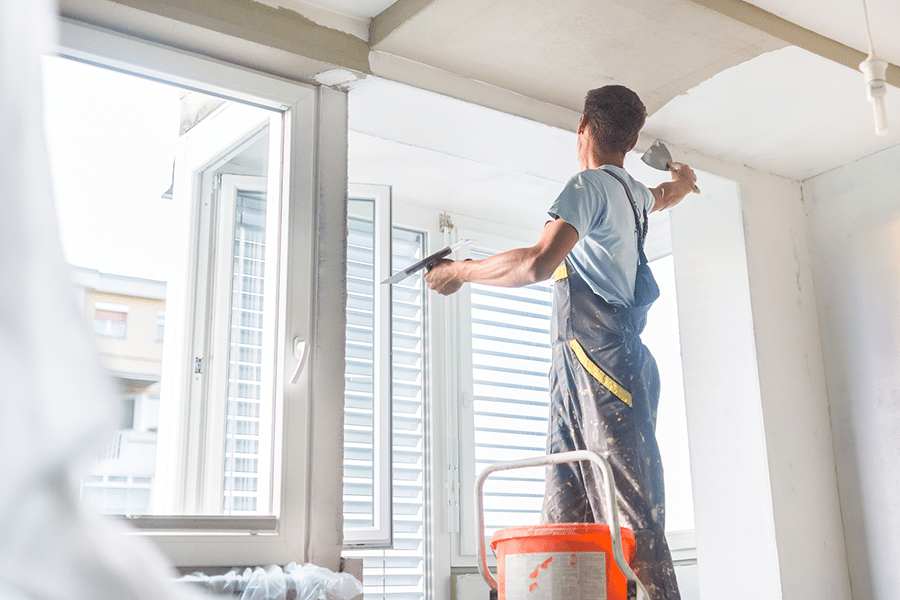



The Simple Trick to Find Out Who Pays for Wear and Tear in a Property
When you become the landlord of a property, you take on some new responsibilities. You’ll need to deal with things like maintenance and repairs, as well as potential liability issues. Some of these responsibilities aren’t so obvious – for example, do you know if your rental property has a clause about fixing the broken toilet or who pays for the wear and tear? To find out, you need to carefully read through your lease agreement. After all, it’s important to understand exactly what is and isn’t included in your tenancy. Knowing who will cover maintenance costs and other details upfront can save you a lot of headaches and money further down the road. So let’s take a look at some ways to discover this information in your lease!
Know Your Rights as a Landlord
First and foremost, you should know your rights as a landlord. Most state laws require that landlords keep their properties in good working condition. This means that you’ll be expected to cover things like repairing broken appliances and fixing leaky faucets. However, different states will have different laws. So, you should always check the details related to your area. There are also some other areas where landlords have some leeway. For example, you might be required to supply your tenants with a certain amount of water each month, but you can set the temperature. On the other hand, you have wide leeway when it comes to setting rules for things like noise and pets.
Check the Initial Conditions Clause
Your lease may have an initial conditions clause. An initial conditions clause is when you and your tenant agree ahead of time about what is expected when the tenant moves in. This can be helpful because you can both agree on what the unit looks like when they first move in. There are a few things you can include in an initial conditions clause. You can discuss what is broken and what needs repair. You can also decide who is responsible for fixing what. You can talk about things like paint, carpet, and appliances. At the same time, you could also negotiate a partial walk-through. A walk-through is when you and your tenant check the condition of the place together. This might be helpful if there’s a disagreement about what needs to be fixed. At the same time, you could just do a walk-through without your tenant present if you’d prefer.
Ask Your Repairs and Maintenance Company
You may have a repair and maintenance company that you use for your properties. If so, ask them about any clauses about wear and tear in your lease. Your repair and maintenance companies will have seen a lot of different leases. So, they should be able to let you know what clauses you need to watch out for. Your company could also let you know who they think should cover the wear and tear. This can help you get an idea of what your company thinks is fair.
Read Through Your Lease Agreement
As you read through your lease, you should look for any clauses that mention wear and tear or repairs. You can also look for a short-term vacancy clause. This would say that you have to repair things that are broken when you have a new tenant. You may also have a clause that says the tenant has to fix broken things. You may even have a clause about paying for the wear and tear or repairs. At the same time, you can also read over the addendum to see if there are any notes. The addendum is the document that outlines everything you and your tenant have agreed to. This can include things like deposits and rent amounts.
Find Out If There Is a Short-Term Vacancy Clause
A short-term vacancy clause is when you have to repair broken things when you have a shorter-term tenant. For example, if you have a one-year lease and the tenant moves out, and you find a new tenant within the next three months, you may have to repair the broken appliances because you only have a short-term tenant in the property. If the short-term vacancy clause is in your lease, you’ll want to make sure that you have enough money set aside to cover the repairs. If you don’t have enough money, you may be on the hook for the broken appliances. If the breakage is due to normal wear and tear, you likely won’t have to repair it. But if it’s due to negligent or abusive behaviour, you may have to repair it regardless.
Check the Dating of the Property and Its Condition
You should also check the dating of the property and its condition and compare the date of the property with the date of the lease. If the lease was written after the property was built, your tenants should have expected the wear and tear that goes with living in an older place. If the lease was written before the property was built, the lease may have a condition clause or may be written in a way that allows you to charge tenants for wear and tear that was already present.
Summing up
You should always read through your lease agreement to find out who is responsible for wear and tear or repairs. You can do this by checking the initial conditions clause, reading through your lease, and even checking the dating of the property and its condition. That way, you’ll know exactly how your lease works, and you’ll be prepared for any potential issues that may arise! If you want to ensure your rental property is in excellent condition, check out our blog post on how to maintain rental properties!